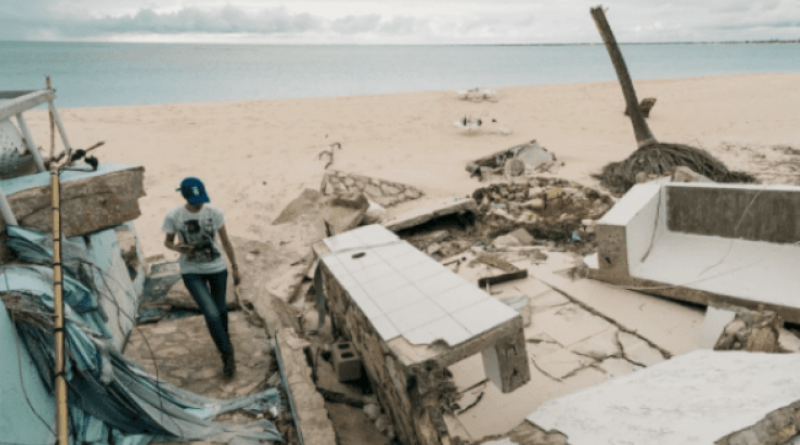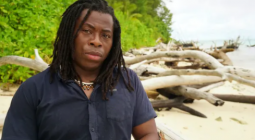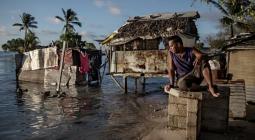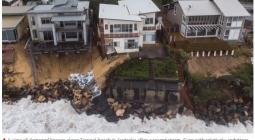Fighting for Survival: Four small islands on the frontline of climate change

Small islands sit on the front line against climate change. Remote, low-lying, and with limited natural resources, they’re among the most vulnerable to rising sea levels, declining rainfall, and extreme weather.
It can be an unfair reality to accept that, despite contributing less than 1% of total greenhouse gases, these island states stand to suffer the biggest and worst impacts of climate change.
For the communities that live on these islands, climate change threatens their livelihoods, and sometimes their very existence.
Below, take a look at four small islands in different regions across the world, and how, despite the challenges, they’re taking the lead in the fight against climate change.
CABO VERDE
Cabo Verde is an archipelago of 10 islands, located about 500km off the west coast of Africa.
Like many small island states, it has few natural resources and imports most of what it needs. Only 12% of the land is suitable for agriculture, and it has no natural forests.
Climate change has reduced rainfall, leading to persistent droughts and more frequent extreme weather events - most recently damaging flash flooding in September 2020, when nearly three months of rain fell in 24 hours.
80% of the territory is now considered to be at high risk of drought, and as rainfall levels continue to decline, water shortages are becoming increasingly common.
All of this is compounded by the fallout from COVID-19. In a territory where 35% of people live in poverty, the pandemic has caused the biggest recession in modern history, hitting tourism in particular - an industry worth 24% of GDP - extremely hard.
Despite these challenges, the government recently announced its updated national climate pledge, making Cabo Verde one of only eight countries to have done so as of April 2021. As part of its pledge, they aim to reduce emissions by 18% and source 50% of their electricity from renewable energy like wind and solar power by 2030.
With more than a hundred measures planned, the pledge, which was prepared with the support of UNDP’s Climate Promise, is expected to impact food, water and energy security, and improve resilience of the economic and social sectors across the country.
MAURITIUS
For seafront communities on the island of Mauritius, rising sea levels threaten their homes and livelihoods.
The coastline is shrinking, changing the island forever. Between 1967 to 2012, Mauritius lost 17% of its coastline - the equivalent of 13km - due to erosion. Some of its beaches have thinned out, reduced in width by as much as 23 metres in places.
Nowhere is this more felt than in Riviere des Galets, a seafront community of 97 families, located on the southern coast of Mauritius. Here, without the natural protection of an offshore barrier reef, it sits exposed to the full brunt of increasingly strong and violent waves from the Southern Indian ocean.
Residents can only watch as rising sea levels gradually erode the coastline, flooding their homes and damaging property.
With the support of UNDP, the government is working to safeguard the future of these communities, in part, by building a coastal sea wall to protect from severe flooding during storm surges.
430 metres long, it’s the first of its kind in Mauritius and was designed to cope with expected wave and water level conditions over the next 50 years.
Protecting coastal areas is only one part of Mauritius’ plan to tackle climate change. In 2016, they announced a raft of new measures, including greater use of renewable energy, and the development of a sustainable transportation system, with the aim of cutting greenhouse gas emissions by 30% by 2030.
JAMAICA
Like many Caribbean nations, the island of Jamaica is battling to adapt to a changing climate.
As temperatures have increased, Jamaica’s rainfall patterns are changing. While there’s been an overall decline in rainfall, it’s been particularly extreme in the east and west, where much of the agricultural production takes place. For farmers, this means more dry spells, drought, and critically - reduced crop yields.
Drought is nothing new here, but the problem is getting worse. In 2014, Jamaica was hit with what was considered the worst drought of the past 30 years. It devastated farming communities and led to a 30% drop in production. These crop failures, along with brush fires, amounted to a loss of nearly one billion dollars.
But farmers here are adapting. New sustainable farming practices, irrigation and water harvesting systems are ensuring they can keep watering their crops even during the most persistent periods of drought.
Jamaica also recently announced new climate targets, doubling its ambition. The enhanced goals include - for the first time - the forestry sector, an area that accounts for more than half of the island’s total land use.
The country has committed to maintaining their current levels of forest cover, which will improve water, soil and air quality. And it's building on existing pledges to cut emissions, using more sustainable agricultural practices and increasing their use of renewable energy.
ANTIGUA AND BARBUDA
A 1000 miles east of Jamaica, lies the island nation of Antigua and Barbuda. With a population of 90,000, it’s one of the smallest in the Caribbean.
Like its close neighbours, it not only contends with the challenges of rising sea levels and coastal erosion, but also the threat of hurricanes.
Antigua and Barbuda sit in the so-called “hurricane belt”, an area of the Atlantic that’s susceptible to hurricanes and other extreme weather from June to November each year.
Antigua and Barbuda is playing it’s part in curbing the rising temperatures. Since 2015, they’ve made huge progress in advancing their climate goals.
The transition to a clean, fossil fuel-free economy remains at the heart of their vision, but they’re now scaling up their targets and proposing a move to 100 percent renewable energy in the next two decades.
At the same time, they’ve embraced a shift to an economy that minimizes waste and maximizes the use of natural resources. And with more investment in the protection of waterways, buildings and other critical infrastructure, it’s hoped they’ll be prepared when the storms return.
With ambitious climate goals and initiatives, small island states are leading the way in climate action. UNDP is currently supporting 28 Small Island Developing States (SIDS) and 36 Least Developed Countries (LDC) in the revision and update of their Nationally Determined Contributions or NDCs, ensuring that these countries increase their adaptation and mitigation ambition of their pledges.In 2017, Hurricane Irma devastated Barbuda, destroying 95% of homes and leaving a third of the country uninhabitable. It was among the worst hit of all Caribbean islands, suffering an economic loss of over $120 million dollars. As temperatures continue to rise, it’s expected hurricanes will become more frequent in the years ahead.
*With UNDP's support through the NDC Support Programme, SIDS and LDCs are able to add new sectors, increase their emissions reductions target and include cross-cutting areas such as gender and just transition in their NDC submission.*
The “Progressive Platforms for Climate Action Project*” works to increase the capacity of SIDS and LDCs to participate in the UNFCCC process and beyond, which trickles down to on-the-ground policy making. *Jamaica receives support from AOSIS under the project, which is implemented by UNDP and funded by European Union.
June 2021
reliefweb




